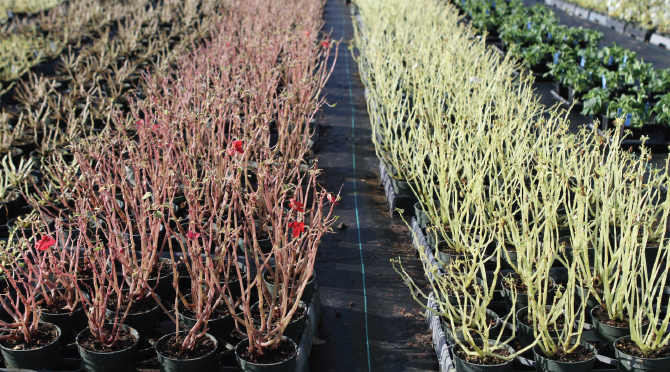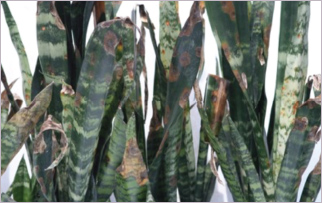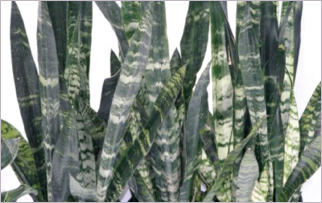A Crash Course in Fungicide Resistance
Battling diseases is hard enough. But when fungicide resistance enters the picture, the battle gets even more challenging.
Fungicide resistance is like a tiny leak in the bathroom plumbing. It can easily go unnoticed until, one day, it just can’t be ignored. For greenhouse growers, that experience can culminate in the realization that you’re now applying more frequently and at the highest labeled rates you previously used to for the same efficacy — or even worse, your preferred fungicide has stopped working all together.
Diseases are becoming increasingly more challenging to manage as customer expectations rise, pathogens continue to evolve and resistance spreads. But understanding how to identify resistance, why it occurs and how to prevent it can go a long way in prolonging the efficacy of your current fungicide program.
| Get more insights from Jane Sign up to receive future communications from Envu Turf and Ornamentals. /// sign up |

Figure 1. A severe outbreak of downy mildew on impatiens where fungicides did not provide effective control. (All photos: Envu)
// What it is and what it isn't
It may sound counterintuitive, but fungicide resistance isn’t caused by fungicides. It’s caused by evolution. Like all living organisms, fungi are constantly changing and will naturally evolve to assume any trait or characteristic that helps them survive and reproduce. And it’s a process that’s particularly apparent in the case of fungicide resistance.
Certain individuals within a fungal population will have the natural ability to survive a fungicide application. And when those individuals reproduce, they then pass on that same quality that enabled them to persist in the plant. Therefore, when the same fungicide – or type of fungicide – is used repeatedly, those resistant individuals can multiply (often quite rapidly) until the entire population eventually becomes resistant. The good news, though, is that fungicide resistance is rare and there are more likely reasons growers might experience poor control from a fungicide.
// Identification and diagnosis
Common signs of a fungicide failure include a disease outbreak seven to 14 days after a preventive application, or symptoms of disease continuing to develop and spread to adjacent plants in the week or two following an application. Although resistance can be the cause for a fungicide failure, there are numerous – and often far more likely – reasons for lack of control, such as:
- Applying a product that doesn't control the disease: The most important step before applying a fungicide is to obtain an accurate diagnosis of the disease. Making an informed decision and applying a fungicide that is labeled for the disease can help you avoid undue frustration and save you time and money. For difficult-to-identify diseases, consider contacting your local university extension.
- Not following the product label: Always read and follow the manufacturer’s label, noting the diseases controlled, application rates, timing and intervals. The label is the law, so it’s always worth investing the extra time to check the product label to ensure it addresses the pathogen or disease you’re treating. Also note the application rates and intervals, which should always be strictly followed, as they have been evaluated and proven effective through extensive research. Application timing is also critical, as some products may not provide curative activity and will only be effective when applied preventatively, before the onset of disease.
- Resistance: Once you’ve eliminated the other possible causes of a failed treatment, consider reaching out to your local county extension agent or university extension specialist with a sample. Often, they can test isolates directly in the lab or identify a resource who can step in to assist.
// Prevalence
There are a number of diseases that are of particularly high risk for resistance development. Botrytis cinerea, (Botrytis blight), is among the most widely studied pathogens and is broadly recognized as one of the costliest in the greenhouse. Both Botrytis cinerea and Pythium spp. (root rot) are of especially high concern on poinsettias in late fall/early winter.
Researchers are also on the lookout for resistant strains of Alternaria alternata, a common leaf spot pathogen on numerous ornamentals, as well as occurrence of resistance in downy mildews. In fact, downy mildew on impatiens already has fungicide resistance documented.

Untreated |

Treated |
Figure 2 and Figure 3. Fungicides can be effective in managing diseases such as anthracnose caused by Colletotrichum sansevieriae.
// Building a resistance management program
To recap, fungicide resistance occurs when the same fungicide, or type of fungicide, is used repeatedly to control a disease. The key to managing resistance is to avoid repetitious use of the same products when possible by rotating different types of fungicides. Here’s how to do it:
Fungicide active ingredients vary based on two main components: their Mode of Action (MOA) – or the way in which they stop fungal growth, and their Site of Action (SOA) – the specific location within a fungus where growth is stopped. A rotational program is built around alternating products with different MOAs and SOAs.
Thankfully, the Fungicide Resistance Action Committee (FRAC) makes that easy. FRAC was formed to provide best management practices and guidelines to help prolong fungicide effectiveness for the professionals who depend on them. As part of that mission, they developed a system for categorizing products based on their MOA and SOA – a categorization that exists today as the FRAC Code List.
Today, most fungicide labels include the FRAC code as well as a dedicated resistance management section. Growers should read and follow this section closely, as there are instances where some products need to be tank mixed when used for a specific disease, such as downy mildew.
For more information about fungicide modes of action, sites of action or resistance management, visit www.frac.info.
// Using new innovations to manage resistance
The more tools you have to rotate, the stronger your rotation. Studies show that there’s a clear advantage any time you’re able to introduce a new active ingredient for disease control because new active ingredients mean new tools and new rotational options for growers.
An innovative product from Envu– Broadform® – contains two active ingredients, Fluopyram and Trifloxystrobin. Each ingredient is from a separate FRAC category. Fluopyram belongs to FRAC code 7, which includes succinate dehydrogenase inhibitors (SDHI) — but it’s categorized under a new chemical class as the only pyridinyl ethyl benzamide SDHI. On a molecular level, fluopyram has a unique chemical structure that’s 100 times more flexible than carboximide SDHI fungicides, allowing it to reduce the potential for resistance to occur.
Furthermore, the combination of active ingredients fluopyram and trifloxystrobin increases the spectrum of disease control by targeting two different sites of respiration, making Broadform an excellent rotational tool for growers – particularly against diseases like Botrytis, which is notorious for developing resistant strains.
As challenging as it can be once it occurs, fungicide resistance is preventable. If you’re ever in doubt about an application, just play it safe and avoid more than two back-to-back applications of products with the same FRAC code.
